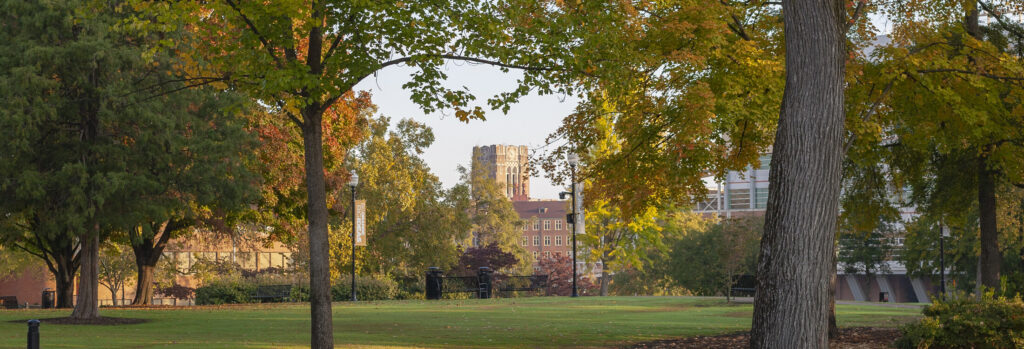Thanks to two federal grants totaling $4.3 million, tree lovers hoping to expand Knoxville’s canopy – especially in neighborhoods needing it the most – have something to celebrate.
The University of Tennessee, Knoxville, was awarded $2.6 million to increase tree canopy coverage, reduce stormwater runoff, mitigate extreme heat and bring ecosystem services to communities in East Knoxville. The federal government awarded another $1.7 million to Trees Knoxville, a non-profit partner, to plant and maintain 7,500 trees.
UT Support for Knoxville’s Tree Project
Associate Professor of Civil and Environment Engineering, Jon Hathaway will lead the university’s team, which also includes Assistant Professor of Social Work, Jennifer First and Professor of Urban Forestry, Sharon Jean-Philippe.
Hathaway added that while the trees are a major part of the plan, the overall aim will help fulfill UT’s land-grant mission by focusing on several areas.
He added, “Our plan to install gravel tree stormwater systems and provide accompanying public education and workforce development has significant implications for climate resilience by providing shading, evaporative cooling, and extreme precipitation mitigation; for workforce development by providing internships in the forestry profession and building a group of certified professionals in green infrastructure maintenance; and for increasing public participation in urban forestry to build the next generation of diverse leadership in this field.”
City of Knoxville’s Goal to Increase Green Space
According to Knoxville Mayor Indy Kincannon, the grants, awarded as part of the Inflation Reduction Act, come at a strategically opportune time.
“The investments made possible by these federal grants will be transformative,” said Kincannon. “We’re going to reverse the slow decline of tree canopy, and in fact prioritizing the greening up of areas that we know are the most in need of additional plantings.”
The city’s Urban Forestry Division oversaw a first-ever comprehensive canopy assessment in 2021. That study documented more than 24,000 acres of tree cover in Knoxville – 38% of the total land area. The canopy decreased by 732 acres over a decade, however, with most of those decreases on private property. The canopy assessment, along with immense public input, led the city and Trees Knoxville to develop the Knoxville urban forest master plan, a long-term roadmap showing which trees to plan there. Trees Knoxville and the city share a goal of increasing tree cover to 40%. While the city generally plants up to 500 trees a year, the grant funding to Trees Knoxville will pay for three times as many plantings.
“The master plan is community driven,” said Trees Knoxville Chair Dale Madden. “It will better human health, create more access to green space and improve our quality of life. This federal funding is a springboard for us to launch the implementation of the plan. What do we in these next five years will be critically important to the future of Knoxville for many years to come.”
The grant to Trees Knoxville will fund the purchase, plantings and care for 1,000 trees on public property each year for five years, plus a giveaway of 500 trees a year for residential plantings. Trees Knoxville will offer free educational events on tree care and provide professional training to expand the tree-care workforce.
UT’s grant, meanwhile, will complement the work of Trees Knoxville and the city.
Growth Through Collaboration
One of the first gravel tree stormwater systems was installed in East Knoxville in a collaborative effort between the U.S. Forest Service, UT, and the City of Knoxville Urban Forestry Division.
“Observation of the system showed it was well functioning and tree growth and health in the system were excellent,” Hathaway said. “Due to the low cost and benefits provided by these systems, GTSS may be an integral part of climate resilience in communities, in particular those that are economically disadvantaged.”
